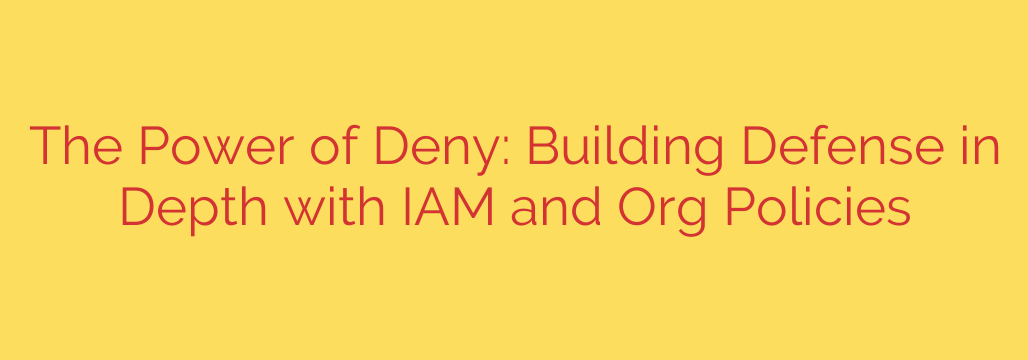
Building a strong security foundation in cloud environments requires more than just granting permissions. A critical, often overlooked, component of a robust security posture is the effective use of deny rules. While many focus primarily on defining what users or services can do with allow policies, understanding and implementing deny is paramount for truly secure access control.
The principle is simple yet incredibly powerful. A deny policy explicitly forbids an action, and in most modern access control models, an explicit deny overrides any conflicting allow statement. This provides a crucial safety net. If you have multiple policies granting permissions, and one of them is overly broad or misconfigured, an explicit deny can prevent unintended access to sensitive resources. It acts as a hard barrier, stopping actions regardless of other permissions.
Implementing deny effectively is key to achieving defense in depth. This security strategy involves using multiple layers of security controls to protect resources. In the context of identity and access, deny rules form a vital layer. They can be applied at different levels:
- Identity and Access Management (IAM) Policies: Individual or group policies can include specific deny statements to restrict access to particular resources or actions, even if a user inherits broader permissions elsewhere. This allows for fine-grained control and helps mitigate risks associated with complex permission structures.
- Organizational Policies: At a higher level, organizational policies (sometimes called service control policies or SCPs depending on the platform) provide a way to centrally enforce guardrails across an entire organization or specific folders/accounts. Using deny in these policies allows administrators to define actions that are absolutely forbidden for all identities within a scope, regardless of their individual IAM permissions. This is incredibly effective for preventing compliance violations, restricting access to dangerous service actions, or ensuring data stays within defined boundaries.
The power of deny lies in its ability to fail securely. By defaulting to deny or having explicit deny rules in place for critical operations or resources, you significantly reduce the attack surface. It’s a fundamental principle for minimizing the impact of potential misconfigurations and ensuring that only explicitly allowed and not explicitly denied actions can occur. Mastering the use of both allow and deny rules is essential for building a truly resilient and secure cloud infrastructure.
Source: https://cloud.google.com/blog/products/identity-security/just-say-no-build-defense-in-depth-with-iam-deny-and-org-policies/








